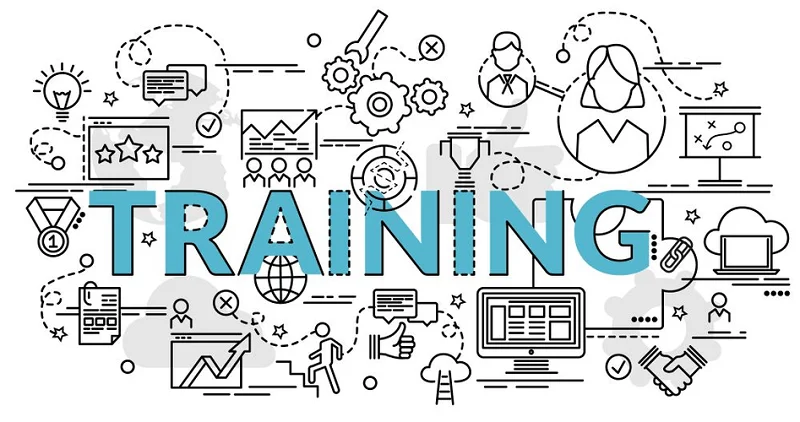One thing to note about the v-model is that no phase can start until the previous one is completed including a corresponding testing exercise. Prototyping has different variants which are typically grouped as throwaway or evolutionary. Throwaway prototypes create replicas of the software that will eventually be discarded while evolutionary prototypes create a robust replica that will continuously be refined until it reaches its final version. This procedure where the care is taken for the developed product is known as maintenance.

Phases 4 through 7 represent an iterative process whereby a prototypical ES is evolved, and the final prototype developed through these iterative phases is installed in an operating environment. The next section presents more detailed descriptions of each phase and discusses existing literature and findings in light of these phases. Each SDLC model offers a unique process for your team’s various project challenges. The project’s specifications and intended results significantly influence which model to use. For example, the waterfall model works best for projects where your team has no or limited access to customers to provide constant feedback.
Development Phase
Regardless if the team works with a document of functional requirements or a handwritten list, everyone must be able to understand each proposal, and each comment, to be involved. With web application security add an extra layer of protection to your application and stop DDoS attacks and data breaches before they even occur. SDLCs can also be more specifically used by systems analysts as they develop and later implement a new information system. Thus, systems analysts should have an even mix of interpersonal, technical, management, and analytical skills altogether.
The framework is structured in a methodical way, and is used to offer an outline for the development and adjustment of technical and non-technical components of a high-quality system. In the greater context of management information systems or MIS, SDLC helps managers to design, develop, test, and deploy information systems to meet target goals. The agile methodology prioritizes fast and ongoing release cycles, utilizing small but incremental changes between releases.
Stage 5: Implement
Software development life cycle is a very similar process to systems development life cycle, but it focuses exclusively on the development life cycle of software. With its customizable spreadsheet interface and powerful collaboration features, Smartsheet allows for streamlined project and process management. Use Smartsheet’s SDLC with Gantt template to get started quickly, and help manage the planning, development, testing, and deployment stages of system development. Create a timeline with milestones and dependencies to track progress, and set up automated alerts to notify you as anything changes. Share your plan with your team and key stakeholders to provide visibility, and assign tasks to individuals to ensure nothing slips through the cracks.

Most developers and project managers opt for one of these 6 approaches. In the development stage of SDLC, the system creation process produces a working solution. Developers write code and build the app according to the finalized requirements and specification documents. Ready to maximize the efficiency of your systems development life cycle?
Software Testing
The V-model (which is short for verification and validation) is quite similar to the waterfall model. A testing phase is incorporated into each development stage to catch potential bugs and defects. The development stage is the part where developers actually write code and build the application according to the earlier design documents and outlined specifications. Project managers in charge of SDLC need the right tools to help manage the entire process, provide visibility to key stakeholders, and create a central repository for documentation created during each phase.

Software developers use this as a guide to ensure software is produced with the lowest cost and highest possible quality in the shortest amount of time. Today, most teams recognize that security is an integral part of the software development lifecycle. You can address security in SDLC following DevSecOps practices and conducting security assessments during the entire SDLC process. A software development lifecycle (SDLC) model conceptually presents SDLC in an organized fashion to help organizations implement it. Different models arrange the SDLC phases in varying chronological order to optimize the development cycle. The development team combines automation and manual testing to check the software for bugs.
ABOUT TOOLSHERO
When teams develop software, they code and test on a different copy of the software than the one that the users have access to. The software that customers use is called production, while other copies are said to be in the build environment, or testing environment. System Design is a critical stage in the SDLC, where the requirements gathered during the Analysis phase are translated into a detailed technical plan. It involves designing the system’s architecture, database structure, and user interface, and defining system components. The Design stage lays the foundation for the subsequent development and implementation phases.
However, the Agile model’s flexibility is preferred for complex projects with constantly changing requirements. DevSecOps, an extension of DevOps, is a methodology that emphasizes the integration of security assessments throughout the entire SDLC. It ensures that the software is secure from initial design to final delivery and can withstand any potential threat. During DevSecOps, the team undergoes security assurance activities such as code review, architecture analysis, penetration testing, and automated detection, which are integrated into IDEs, code repositories, and build servers.
Why should you have a system development life cycle in place?
Use the above guide to identify which methodology you want to use in conjunction with your SDLC for the best results. It’s linear and straightforward and requires development teams to finish one phase of the project completely before moving on to the next. The prototype expert systems development commences with project approval.
- This led to a high number of bugs that remained hidden as well as increased security risks.
- Those involved in the SDLC include the c-suite executives, but it is the project/program managers, software and systems engineers, users, and the development team who handle the multi-layered process.
- By developing an effective outline for the upcoming development cycle, they’ll theoretically catch problems before they affect development.
- They are typically tasked with selecting the right project management methodology with full ownership of the methodology components.
- AI-powered language models enhance communication between stakeholders and developers by understanding and processing user queries accurately.
- This unique role frequently moves several times throughout SDLC phases, formulating requirements for the system along the way for the next development cycle, and upholding SDLC standards.
- These days, many people are successfully pivoting or switching their careers from education, the service industry, and more to coding and development.
From then on, suppose the team representative is allowed the freedom to develop the roles assigned to them in whatever way they like. It is possible that one representative might start writing the code for his part, another might choose to prepare the test documents first, and some other engineer might begin with the design phase of the roles assigned to him. The waterfall model provides discipline to project management and gives a tangible output at the end of each phase. However, there is little room for change once a phase is considered complete, as changes can affect the software’s delivery time, cost, and quality. Therefore, the model is most suitable for small software development projects, where tasks are easy to arrange and manage and requirements can be pre-defined accurately.
What is System Development Life Cycle (SDLC)? The theory
Once the requirement analysis is done, the next stage is to certainly represent and document the software requirements and get them accepted from the project stakeholders. AI-powered language models enhance communication between stakeholders and developers by understanding and processing user queries accurately. Kanban is a visual and flexible approach system development life cycle to software development that focuses on continuous delivery and optimizing workflow. Agile is an iterative approach that emphasizes collaboration and adaptability, breaking projects into smaller sprints for incremental development and frequent customer feedback. The goal is to create a blueprint that developers can follow to build the actual software.
